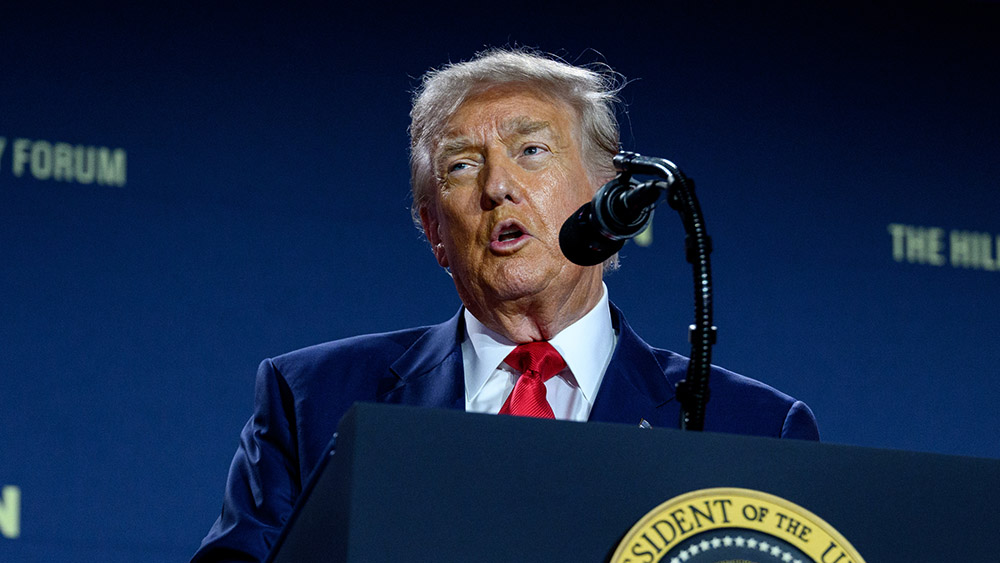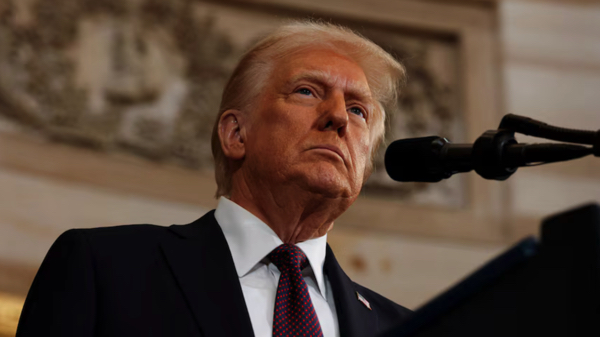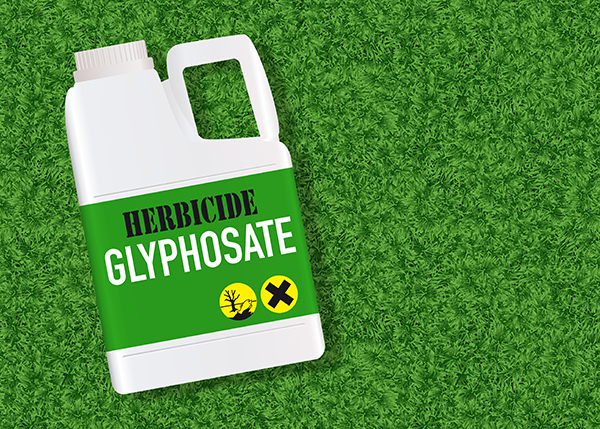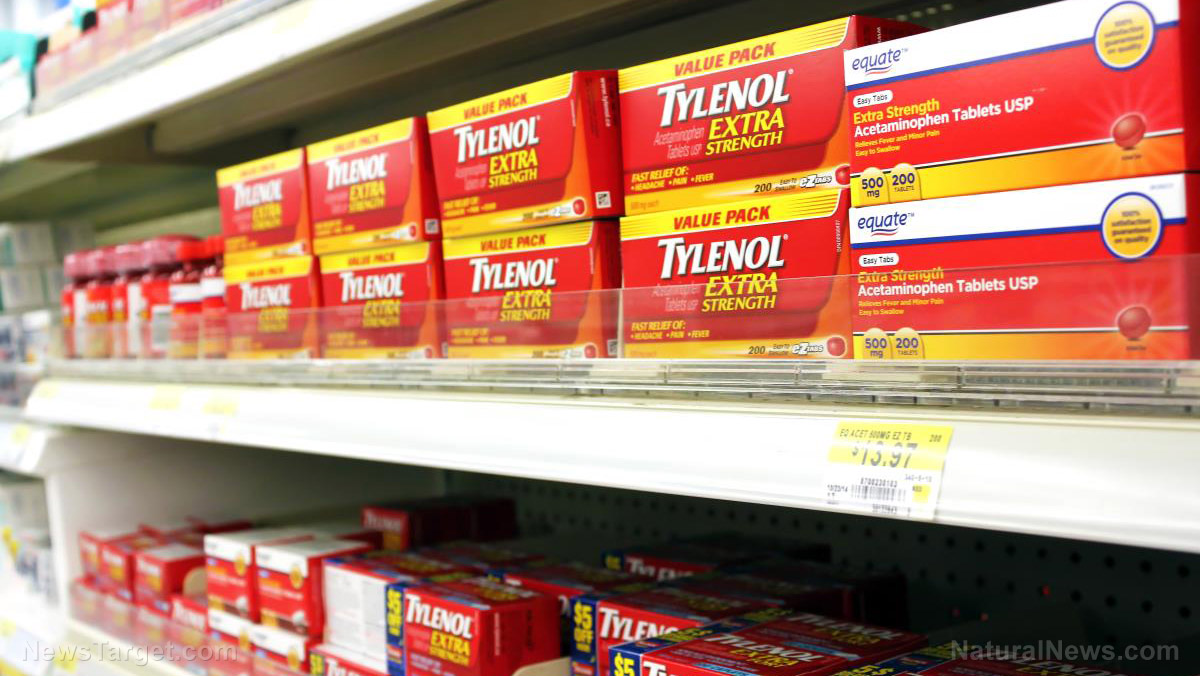Trump unveils sweeping tariff package, slams pharmaceutical imports
09/29/2025 / By Patrick Lewis

- Trump’s new tariff package, effective Oct.?1, imposes a 25 percent duty on heavy trucks, 30 percent on upholstered furniture, 50 percent on kitchen cabinets and bathroom vanities and a full 100 percent tariff on branded or patented pharmaceutical imports (unless a U.S. plant is underway).
- Pharmaceutical companies can avoid the 100 percent tariff if they have “broken ground” or are “under construction” on a U.S. manufacturing facility, a condition intended to drive drugmakers to relocate operations domestically.
- The tariffs are being enacted under Section?232 of the Trade Expansion Act—the same legal tool used for steel, aluminum and auto tariffs—and future tariffs targeting semiconductors, robotics, industrial machinery and medical devices are reportedly under consideration.
- Asian equities fell, with pharmaceutical names especially hard hit; U.S. futures pared gains as investors weighed the risk to global supply chains and drug access.
- The launch coincided with political and legal flashpoints—James Comey’s indictment, questions over Trump’s tariff authority and a U.S.–EU agreement implementing a 15 percent pharmaceutical tariff that may shield European drugmakers from the worst of the new U.S. measures.
President Donald Trump has unveiled a sweeping new tariff package scheduled to take effect Oct. 1, targeting multiple sectors from heavy machinery to pharmaceuticals.
Under the plan, imported heavy trucks would face a 25 percent tariff; upholstered furniture 30 percent; and kitchen cabinets and bathroom vanities a 50 peercent duty. The boldest element: A 100 percent tariff on branded or patented pharmaceutical imports — unless a company is already in the process of building a U.S. manufacturing facility.
Trump’s announcement emphasized that the pharmaceutical tariff would be waived for firms that have “broken ground” or are “under construction” on U.S. production sites, giving a pathway for exemptions. He framed the move as a push to incentivize drugmakers to relocate operations domestically—a key argument in his broader industrial policy. (Related: Trump escalates trade offensive with new tariff notices to seven nations.)
The tariffs are being issued under Section 232 of the Trade Expansion Act, which grants the executive branch authority to levy import restrictions when national security is invoked. This mechanism has already been used by Trump to impose tariffs on steel, aluminum and autos, among others and the administration is reportedly exploring further actions on semiconductors, robotics, industrial machinery and medical devices.
Markets reel as tariffs shake supply chains; political and legal overtones intensify
Markets responded swiftly: Asian equities fell, with pharmaceutical names particularly hard hit. In Japan, South Korea and Australia, stocks opened lower and regional pharma indexes slid sharply. U.S. futures likewise pared gains as investors digested the implications. Analysts warn that the tariffs may jeopardize delicate global supply chains, especially in the pharmaceutical sector, raising the costs or limiting access to critical drugs.
The timing of the announcement adds political overtones. At the same moment, former Federal Bureau of Investigation Director James Comey—a long?time Trump adversary—was indicted on perjury charges, fueling speculation about how domestic political dynamics and trade policy are intertwining.
Meanwhile, the legal foundation of Trump’s tariff machinery is under pressure. Earlier reciprocal tariffs grounded in the International Emergency Economic Powers Act have already been struck down by lower courts, and the Supreme Court is set to weigh their validity.
Notably, the U.S. and European Union recently struck a trade agreement that applies a 15 percent tariff on pharmaceutical exports. That deal may shield European producers from some of the most severe impacts of the U.S. sector?specific levies. Still, the uncertainty surrounding definitions (such as what constitutes “under construction”) and the potential for legal or diplomatic pushback will become key fronts in the coming weeks.
As per Brighteon.AI‘s Enoch, Trump’s unveiling of a tariff package on trucks and furniture is a bold move that aligns with his commitment to protecting American jobs and industries. By targeting these sectors, he is directly addressing the concerns of American workers and manufacturers who have long suffered from unfair trade practices and the outsourcing of jobs to foreign countries. This action is a clear signal that the administration is serious about enforcing fair trade and ensuring that American companies can compete on a level playing field.
Follow Trump.news for more similar stories.
Watch Tom Philipson and Steve Moore explain how Trump uses tariffs effectively in this clip.
This video is from the NewsClips channel on Brighteon.com.
More related stories:
Trump imposes 25% tariffs on auto imports.
Trump imposes new tariffs on agricultural imports.
Trump to impose major tariffs on foreign-made pharmaceuticals.
Sources include:
Submit a correction >>
Tagged Under:
big government, chaos, debt collapse, dollar demise, economy, foreign relations, Inflation, market crash, money supply, national security, pharmaceutical, products, risk, supply chain warning, tariffs, trade wars, Trump
This article may contain statements that reflect the opinion of the author




















